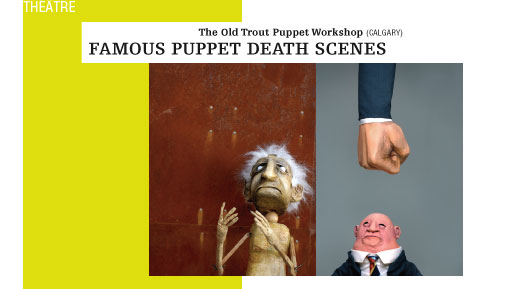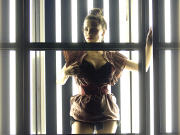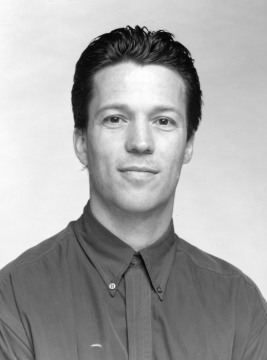Hunting for What’s Out There
Philip Bither, senior curator of performing arts at the Walker, spoke to Jaime Kleiman about how a performance curator finds material, when they both found themselves at Montreal's experimental performance event, Festival TransAmeriques.



Montreal’s sprawling experimental performance festival, Festival TransAmériques, ran May 23-June 7. A compendium of artists from all over Canada and some from Europe presented new work ranging from Robert Lepage’s newest 6-hour epic to an avant-garde company from Calgary’s stab at clever puppet death scenes. I attended for a few days, as did Philip Bither, the Senior Performing Arts Curator of the Walker Art Center. I thought I’d use the festival to open up a broader conversation about the state and shape of new work in general, and what kinds of things we might be seeing onstage in the near future. Here’s what he had to say.
Have you attended Festival TransAmériques before?
Yes, at least three other times since the early 90s. [The current iteration of] TransAmériques is essentially a new combination of two outstanding festivals in Montreal that have existed there for more than a decade: the Festival de theatre des Ameriques (large-scale experimental theater, mostly from the Americas) and the FIND festival (International Festival de Nouvelle Danse, which is mostly European and Canadian contemporary dance and dance-theater).
How long were you there? How many shows did you see?
This year I saw three productions over two days…one of the productions I saw—Lipsync by Robert Lepage—was 6 hours long.
What did you see that piqued your interest? Did you see anything new, different, or similar to what you’ve seen before?
I was in particular interested in catching up with work by two artists I have long admired (and have presented once each through the Walker): Quebec theater director Robert Lepage and Brazilian dance-theater artist Lia Rodriguez. Lepage presented the premiere of Lipsynch, an epic, global melodrama filled with brilliant visual and media elements, some strong performances, and ingenious scenic design. Ultimately, I felt like both the content and the structure of the project needed more work. Lepage is legendary for working on his pieces for months or even years after they open, so it may still evolve into a great work. I also wanted to see a new work called Incarnat by Lia Rodriguez.
Do you see any fundamental differences in theatre that is made in North America versus theatre that’s being made in Europe? Are there similar themes, practices, or ideas threading through new work right now?
Regarding differences, it’s very difficult to generalize, and this is a subject worthy of long essay—or even a book—but here are a few thoughts: in Europe there is greater tolerance for conceptual (both in content and form) approaches and artists/producers feel less need to make performances “entertaining.” While this is mostly good—artists have a tremendous freedom to experiment, even on the largest scale, at times it results in work that feels insular or academic.
In the U.S. in recent years, ensemble and collective theater-making seems to be more dominant than in Europe, particularly in experimental and contemporary forms. Some of the ensembles that have emerged in the past decade in the U.S. represent a significant and exciting development. Our January Out There Festival has, in particular, become a home for the rising contemporary ensemble theater movement in the States. Out There-featured groups like Elevator Repair Service, Big Art Group, SITI Company, Riot Group, Richard Maxwell’s New York City Players, Universes, Big Dance Theater, and many others offer tremendous promise for the future of theater. They are willing to shake things up in a way that most of the traditional producing theater company structures in America don’t allow.
A much more recent trend I’m noticing in the generation of theater/performance makers even younger than those mentioned above is what I might refer to “the new sincerity,” a rejection of an ironic, distanced, more post-modern stance that has tended to define the work of their predecessors. We will see several examples of this direction in several of the 20s- or 30s-something companies appearing in this year’s Out There Festival.
How would you describe your “scouting” process? Is it about specific companies or a body of work of a single artist or an amalgam of the two?
Primarily, it is all about the specific work. One of the things I value most about my position at the Walker is the chance to “discover” important rising innovators as well as to maintain relationships with mature creators over decades—artists who continue to make important advancements with their work.
I tend not to try to program too thematically. I find that this too often leads to making compromised choices (selecting work that may not be the strongest out there) or building…rigid frames.
In terms of how I “scout,” I have an informal circle of a few dozen fellow curators/programmers from different parts of the country, and in the world, who I’ve grown to trust and who travel extensively. They will often alert me to new things that they find exciting. The entire performing arts team (there are five of us) see work regularly. While the other staff members don’t travel as much as I do, the three program managers all travel some each year and recommend things back that they feel strongly about, and everyone tries to see as much work locally as possible. We also scour the press, print and online [media], talk with other artists about who they are being inspired by, and remain open to input from local arts colleagues, patrons, audiences members, and critics.
Of course, the longer one curates live performance, seeing scores or performances each year, it’s easy to begin to get jaded and feel that “there is nothing new under the sun.” But it’s essential to remain passionate and enthusiastic for what contemporary [performing artists] are creating. I feel that one of the things of value I bring to my work is [an] almost naïve enthusiasm for what is possible that artists are making now, for the new.
New York continues to be a center for innovation in America, but economic and real estate pressures are weakening its historic centrality and innovative work can be found in cities large and small across the U.S. In Europe, there continues to be very strong work made in Belgium and in the UK. Depending on the discipline, of course there are very interesting works being made in France, Spain, Holland, Germany, Italy, and elsewhere. But, increasingly, I’m interested in centers of creativity outside of Europe and North America. I have made a priority for myself to each year try to attend festivals in one or two countries where I think a lot of great work is happening: Brazil, South Africa, Indonesia, Australia, Mexico, Argentina and Japan. In 2008, I am hoping to get to a festival in pan-African dance festival Tunisia and to a festival in Indonesia.
Any ideas about what you may be bringing to Out There in the not-too-distant future?
This will be the twentieth anniversary of this landmark series and as a way to celebrate, and in keeping with the alternative nature of the series, we will be looking entirely to the future [by] presenting four companies or artists who have never been presented by the Walker and who I think represent some of the most exciting future creators in theater and performance work. [Miguel Gutierrez and the Powerful People , The TEAM, Claude Wampler , and the David Neumann/Advanced Beginner Group will constitute the Out There series this January.]
Last year, we had a text-heavy spectrum—artists who for the most part were refocusing on the importance of language and story. Some, like Young Jean Lee (Songs of Dragons Flying to Heaven) and The Riot Group (Pugilist Specialist) offered exquisitely written, albeit provocative and innovatively structured, “plays.” This coming year, movement is dominating; we may subtitle the series “Moving Toward the Future.”
Most of the artists we’ve selected use unique physical language and some are outright making dance-theater works, confirming how blurred the lines have become between the most creative edges of dance and theater/performance. Like the interest in non-traditional spaces, many younger theatrical innovators are interested in breaking down the separation between audience and artist, spectator and performer. These lines are also breached in very intriguing ways in Out There 20.